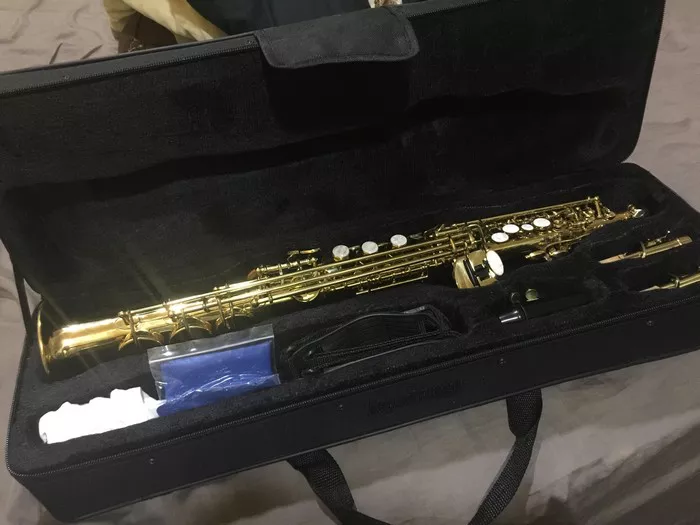Why Is the Soprano Saxophone Hard to Play? Decoding

The soprano saxophone is a captivating instrument known for its bright, penetrating tone and unique expressive capabilities. It holds a special place in many genres, from jazz to classical and contemporary music. Despite its allure, it is often considered one of the hardest saxophones to master. This article delves deep into the reasons why the soprano saxophone is notoriously difficult to play and offers insight into the technical and physical challenges musicians face when tackling this instrument.
Physical Characteristics of the Soprano Saxophone
The soprano saxophone is smaller and straighter compared to its more common siblings, the alto and tenor saxophones. Its compact size influences several aspects of its playability:
Smaller key spacing: The keys are closer together, requiring precise finger placement and agility.
Shorter air column: This affects sound production and tuning, making it more sensitive to breath control.
Straight body shape: Unlike the curved alto or tenor sax, the straight design affects how the instrument balances and how the player positions their hands and mouth.
Intonation Sensitivity and Tuning Challenges
One of the primary reasons the soprano saxophone is hard to play well is its notorious intonation issues. Unlike larger saxophones, the soprano’s higher pitch means that slight variations in embouchure, breath pressure, or finger position can drastically affect tuning.
Narrow margin for error: Even the slightest change in mouthpiece angle or lip tension can push notes sharp or flat.
Overtones and harmonics: Controlling the upper harmonics requires advanced breath support and embouchure control, which beginners often struggle with.
Inconsistent response: Some notes, especially in the upper register, can be prone to “cracking” or squeaking.
Embouchure Complexity
The embouchure—the way a player shapes their mouth around the mouthpiece—is a fundamental aspect of saxophone playing. For the soprano saxophone, the embouchure demands are more rigorous:
Tighter aperture: The mouth opening must be smaller and more precise compared to alto or tenor saxophones.
Muscle control: Small changes in lip pressure or jaw position can cause dramatic tonal shifts or loss of control.
Increased fatigue: Maintaining a strong, stable embouchure on soprano for extended periods is physically demanding.
Breath Control and Air Support
Playing the soprano saxophone well requires excellent breath control, as the instrument’s smaller size means the air column is shorter and more sensitive to airflow variations:
Steady airflow: A consistent, controlled stream of air is necessary to maintain a steady pitch and tone quality.
Dynamic range limitations: Producing both soft and loud dynamics without pitch wavering demands advanced lung capacity and diaphragm control.
Rapid breath adjustments: Players must learn to quickly adjust their breath to manage phrase lengths and fast passages.
Finger Technique and Keywork Challenges
Although the soprano saxophone shares similar fingering to other saxophones, several factors make technical execution tricky:
Smaller keys: Fingers must move precisely and quickly within a limited space.
Faster passages: The soprano’s higher pitch often means parts are played in a faster tempo or require more technical agility.
Alternate fingerings: Due to tuning issues, players often need to learn and apply alternate fingerings to improve intonation and tone, adding complexity.
Reed and Mouthpiece Selection
The choice of reed and mouthpiece plays a significant role in the soprano saxophone’s playability:
Reed strength: Too hard a reed can make the instrument resistant and difficult to control; too soft can produce weak sound and poor response.
Mouthpiece design: Different mouthpieces affect intonation, tone, and ease of playing. Finding the right balance is a trial-and-error process that requires experience.
Equipment sensitivity: Slight changes in reed or mouthpiece setup have amplified effects on the soprano saxophone compared to larger saxophones.
Sound Production and Tone Quality
Producing a beautiful, consistent tone on the soprano saxophone is more difficult than on larger saxophones:
Bright, piercing sound: The soprano’s natural tone is more penetrating and less forgiving of poor technique.
Control over vibrato: Effective vibrato on soprano requires subtle embouchure and breath control.
Balancing warmth and brightness: Achieving a rich, warm tone without harshness is a hallmark of advanced soprano saxophone playing.
How to Overcome the Challenges of Playing Soprano Saxophone
Despite the many difficulties, with dedication and proper technique, players can overcome the soprano saxophone’s challenges:
Regular practice focusing on embouchure and breath control: Daily exercises improve muscle strength and consistency.
Intonation drills: Using tuners and long tones helps develop pitch accuracy.
Experimenting with equipment: Trying different mouthpieces and reeds can lead to better comfort and sound.
Seeking expert guidance: Lessons with experienced soprano saxophonists can shorten the learning curve.
Patience and persistence: Accepting that progress is gradual helps maintain motivation.
Conclusion
The soprano saxophone is a challenging instrument due to its physical design, sensitivity to embouchure and breath, demanding finger technique, and tuning instability. These factors create a steep learning curve that deters many but also attracts dedicated musicians eager for its unique sound. Through consistent practice, appropriate equipment, and patient perseverance, the hurdles of playing the soprano saxophone can be overcome, unlocking a world of expressive and musical possibilities.
- Art
- Causes
- Crafts
- Dance
- Drinks
- Film
- Fitness
- Food
- الألعاب
- Gardening
- Health
- الرئيسية
- Literature
- Music
- Networking
- أخرى
- Party
- Religion
- Shopping
- Sports
- Theater
- Wellness



